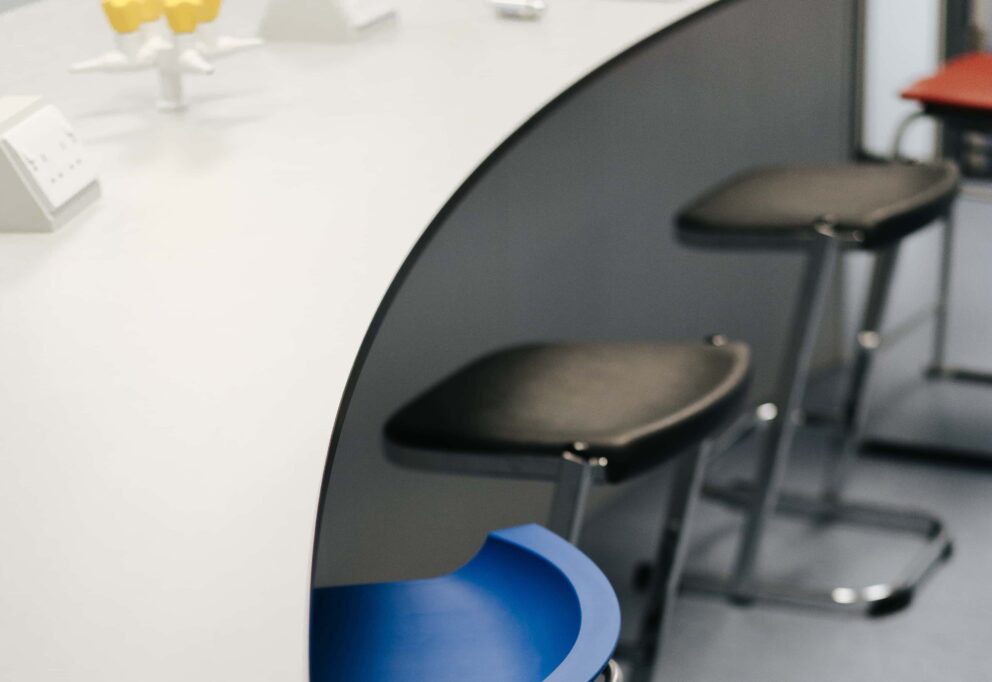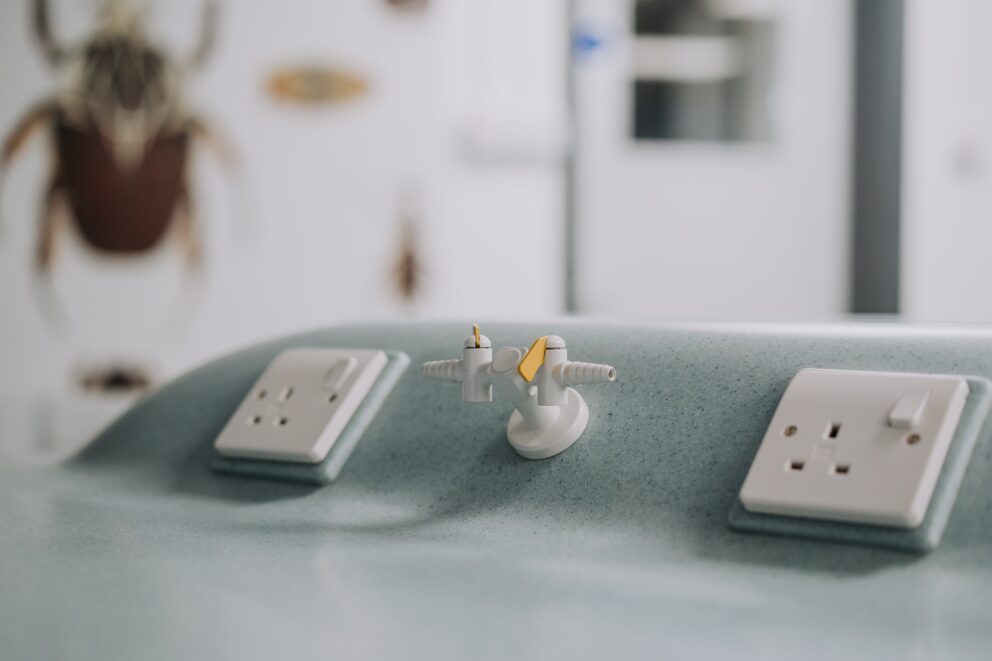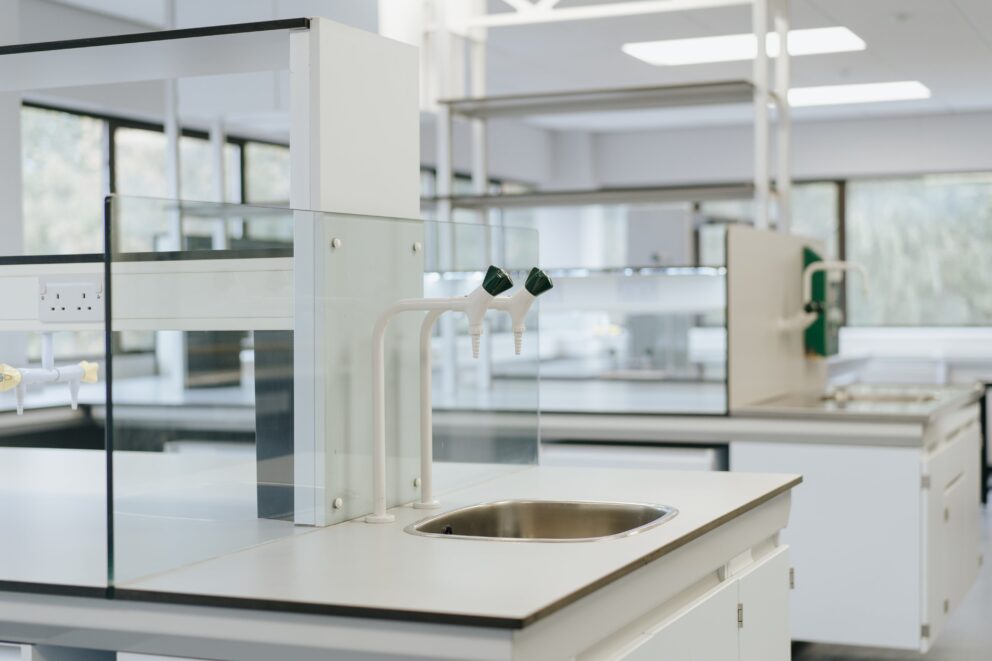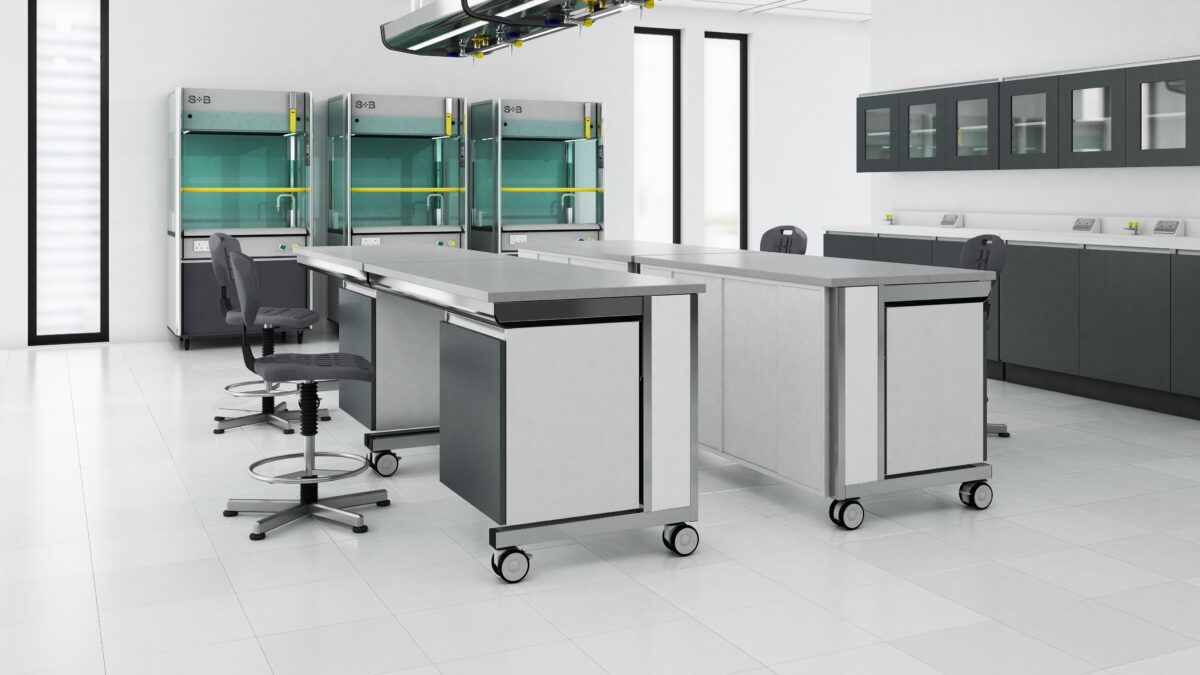Periodic laboratory refurbishment is part and parcel of maintaining up-to-date research facilities and efficient science and technology laboratories.
Over the years, furniture becomes obsolete, damaged and aesthetically dated, leading to poor performance, potential safety risks and an uninspiring workspace.
Regular planned maintenance and individual repairs & updates can help, but it’s important to stay aware of when a full laboratory refurbishment is the best option.
Signs your laboratory needs refurbishment
When deciding if your laboratory needs refurbishment or not, there are several common signs to look out for.
Safety
The safety of the user is a primary factor in deciding when to refurbish a laboratory. If old fume cupboards or gas services show signs of leaking, or ventilation systems are not working effectively, it is essential that you refurbish immediately to protect personnel.
Efficiency
Measure your efficiency and look for indications that old equipment or suboptimal laboratory layouts might be costing you in terms of productivity. That might include consumption of power and water, or something as simple as staff/students getting in each other’s way frequently.
Environment
Check your laboratory environment is staying within acceptable limits. Older equipment tends to heat up when in use, and chemicals not stored properly can cause unpleasant smells which could contribute to uncomfortable working conditions. HVAC systems may also need upgrading over time.
Rust and Corrosion
Exposure to chemicals can accelerate rusting and corrosion of metal parts, hardening and cracking of rubber seals, and degradation of plastics. Lab refurbishment can replace these damaged components and surfaces with modern performance materials.
Equipment Failure
One of the clearest signs that your laboratory is past its best is if equipment starts to fail. That could be a complete breakdown, or an increasingly frequent need to recalibrate. At some point, it becomes more economical to replace equipment that is no longer functioning well.
How to plan a laboratory refurbishment
A good laboratory refurbishment needs planning beyond just installing new equipment. The layout of your lab can have a big impact on efficiency and productivity, and modern performance materials can give you surfaces that are more hygienic too.
Some factors to consider when planning a laboratory refurbishment:
- Number of users

- Age range of users (if these are school students)
- Type and position of new equipment.
- Power/gas/water supply routing and ventilation ducts.

- Worktops, sinks and other surfaces.

- Sufficient space for personnel to move around easily.
- Safety considerations e.g. fire alarms, emergency exits, gas/electricity shut off valves, safe working spaces.

It’s not a case of ‘which step comes first’ but rather of considering all these factors at once. Your floor plan might influence your choice of equipment, or vice versa, and both might depend on the availability of a services supply and ventilation.
How S+B can help
S+B can help at every stage of planning a laboratory refurbishment, we consider your existing space, timeline, budget, and specific objectives to help effectively plan the layout of your laboratory to meet all of your requirements. With our bespoke design capability, the possibilities are endless and using our experience we’re able to offer different solutions to help tackle all situations.
We can work with third-party consultants who may be advising on other aspects of your build, or we can serve as the primary or sole consultant on modern, high-quality laboratory refits.
To find out more, fill in the form on our Contact page, call us on 0161 793 9333 or email sales@splusb.co.uk and a member of our team will be happy to discuss your refurb needs.

